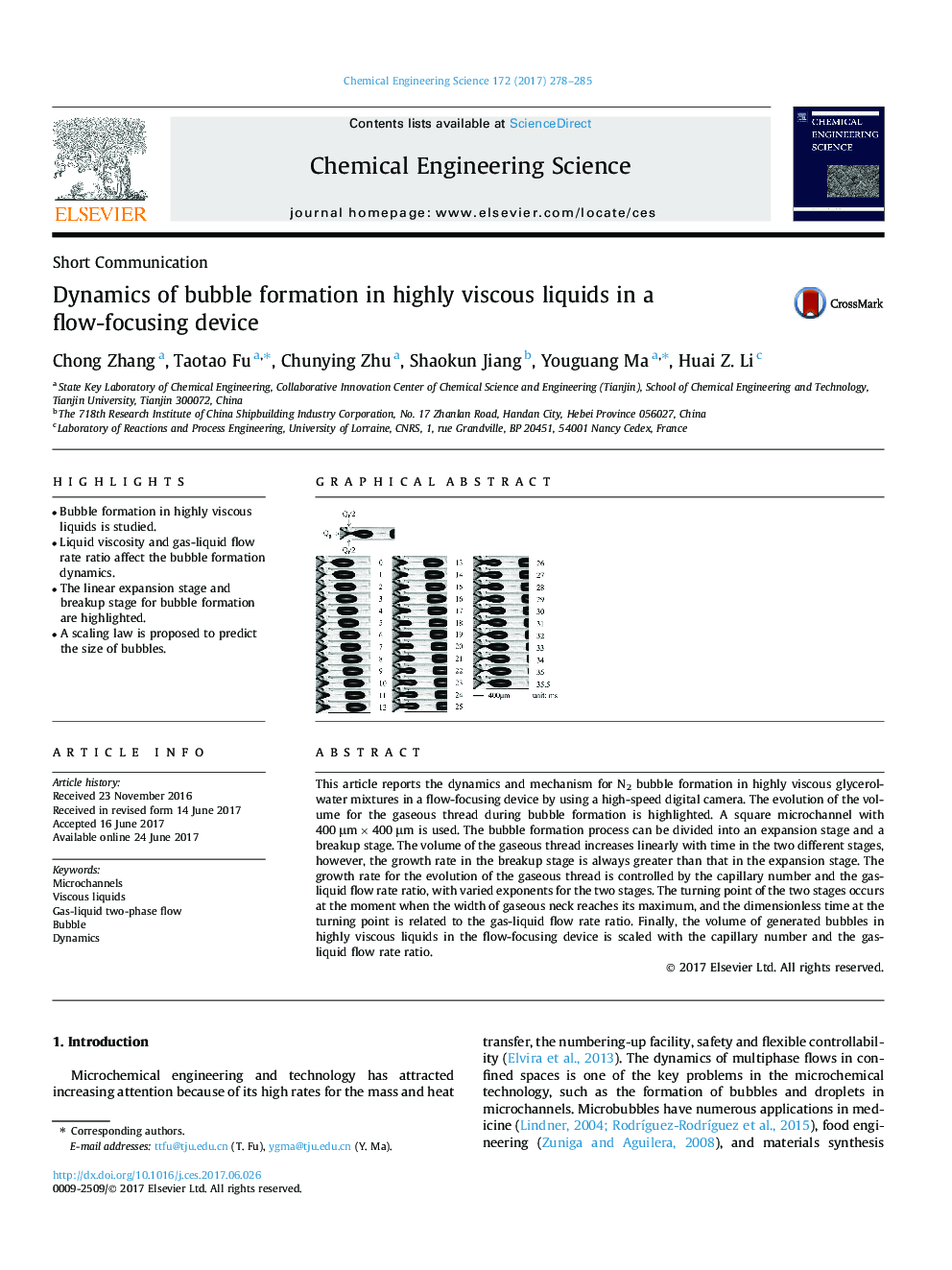| Article ID | Journal | Published Year | Pages | File Type |
|---|---|---|---|---|
| 6467020 | Chemical Engineering Science | 2017 | 8 Pages |
â¢Bubble formation in highly viscous liquids is studied.â¢Liquid viscosity and gas-liquid flow rate ratio affect the bubble formation dynamics.â¢The linear expansion stage and breakup stage for bubble formation are highlighted.â¢A scaling law is proposed to predict the size of bubbles.
This article reports the dynamics and mechanism for N2 bubble formation in highly viscous glycerol-water mixtures in a flow-focusing device by using a high-speed digital camera. The evolution of the volume for the gaseous thread during bubble formation is highlighted. A square microchannel with 400 μm Ã 400 μm is used. The bubble formation process can be divided into an expansion stage and a breakup stage. The volume of the gaseous thread increases linearly with time in the two different stages, however, the growth rate in the breakup stage is always greater than that in the expansion stage. The growth rate for the evolution of the gaseous thread is controlled by the capillary number and the gas-liquid flow rate ratio, with varied exponents for the two stages. The turning point of the two stages occurs at the moment when the width of gaseous neck reaches its maximum, and the dimensionless time at the turning point is related to the gas-liquid flow rate ratio. Finally, the volume of generated bubbles in highly viscous liquids in the flow-focusing device is scaled with the capillary number and the gas-liquid flow rate ratio.
Graphical abstractDownload high-res image (180KB)Download full-size image
